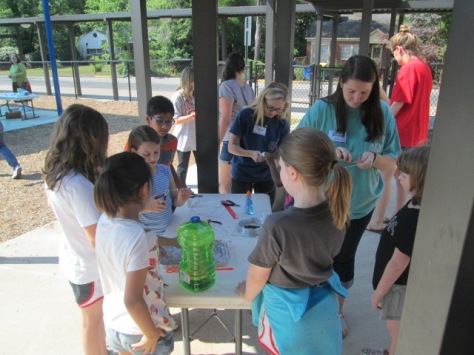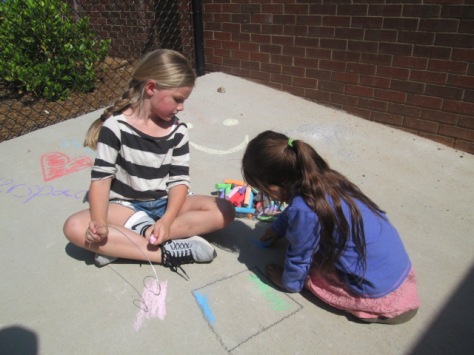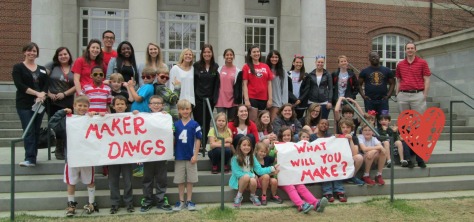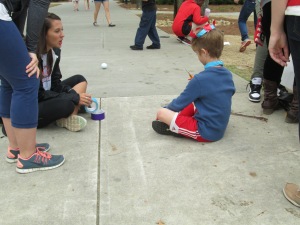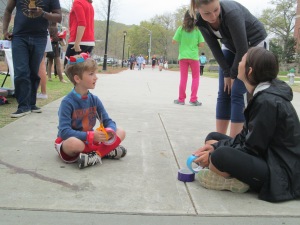
Each year, we hold a Storybook Parade to celebrate our favorite books. This is a long-standing tradition at our school. Students choose a favorite book, dress up as that character, and parade down the sidewalks near our school to advertise their books to the community.

Classroom teachers do a wonderful job of supporting students in making costumes if they are unable to do that at home, but this year, I thought our February makerspace theme could be about costumes so that students could get a jump start on preparing for the parade.

Ahead of makerspace, Gretchen Thomas had her UGA students practice making their own costume pieces based on book characters to get warmed up. I made an introduction video for February’s costume theme and a Google doc signup for teachers to signup students at 11, 11:30, and 12:00 on Tuesdays & Thursdays.

I also went through our makerspace and gathered possible materials that students might use for costumes: felt, fabric scraps, yarn, cardboard, plastic tablecloths, various glue, pom poms, beads, and more.

I pulled several costume and fashion books from our makerspace genre section of the library as well as a few possible examples of books that could become character costumes.

When students signed up, they were signing up for a 3-week session on costume making to meet on Tuesdays & Thursdays. If students finished early, they could take their name off the list to allow others to come, but if they needed all 3 weeks, they could come. Each week, a different group of UGA students came to support our makers in grades 1-5.

During week 1, I met with all students on the carpet to set the stage for our time together. We looked at past storybook parade photos to see the wide variety of costumes people had. I also held up some of the picture books I had pulled and we brainstormed together some possible costume pieces that could be made for each character as well as what we could use that might already be in our closets.

At our tables, I put paper and pencils for students to do some planning as well as all of our costume/fashion books for ideas. Our goal was for each student to have a costume idea before gathering materials from the material table. From past experience, we’ve seen students just grab everything they see because they like it rather than think about what they truly need. We wanted students to be conscious of our makerspace materials and not creating excess waste.

As students gathered their materials with help from our UGA students, they spread out in the library at tables to start working. It took a lot of energy from all adults in the room because every student was creating something completely different. However, it was amazing to look around and see the collaborative creativity between our young makers and our UGA helpers. Many hidden talents and problem solving skills began to emerge.

We watched as cardboard became hats, ladybug wings, ninja swords, and candy bars.

Plastic tablecloths became dresses, skirts, and shirts.

Scraps of fabric were tied together into ninja clothes.


Felt and construction paper became cheetah spots and Little Elliot polka dots.

Cardstock, construction paper, and pipe cleaners became masks.

We all learned how to be resourceful with the materials we had and all worked together to figure out how to be costume designers with limited experience.


With so many works-in-progress, our storage room is a bit of a mess. We have costume pieces drying and stored on every shelf, table, and corner. As students return each day, they locate their own items with assistance from adults and continue the process. Students are allowed to take their costume pieces home, but I’m encouraging them to keep them here at school until our parade on March 8th so that they don’t get lost.
This was our first try at a costume making makerspace. It could use some fine tuning. It’s always a challenge to have so many different projects going at once where every student needs different materials and skill sets to create. However, our extra hands from UGA helps this part a lot. I would love to have a better plan for getting students started and gathering the materials that they each need. Maybe each student needs a box or a tray where they could keep their items. Then these could be stacked on top of one another. I’m not sure, but I would love to debrief the experience with our students and the UGA students to get ideas for next year.
We can’t wait to see these costumes on parade very soon!




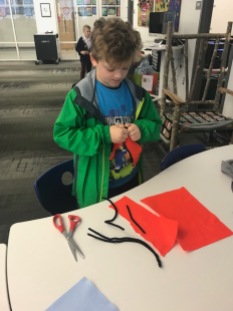














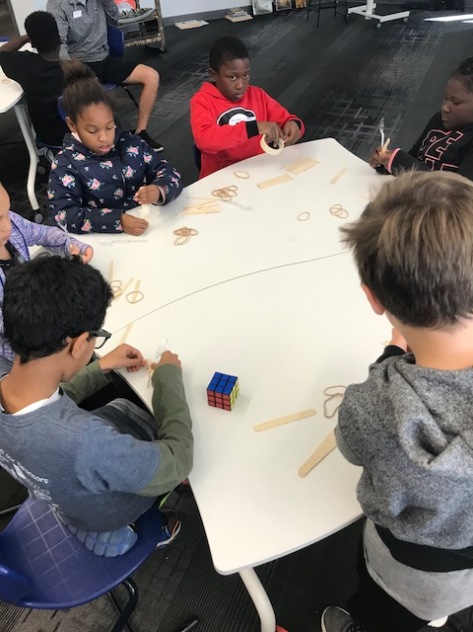
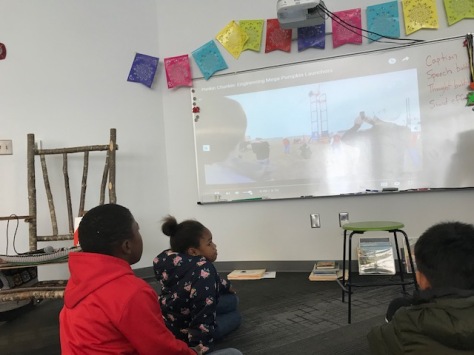

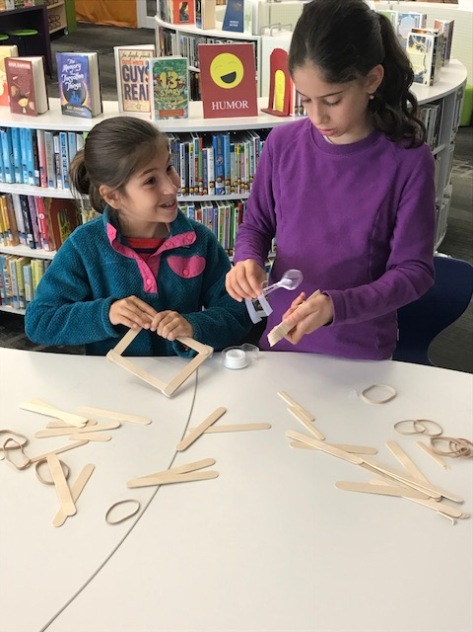
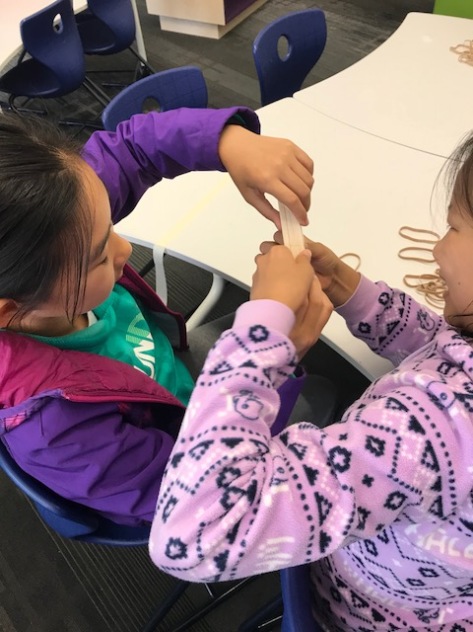
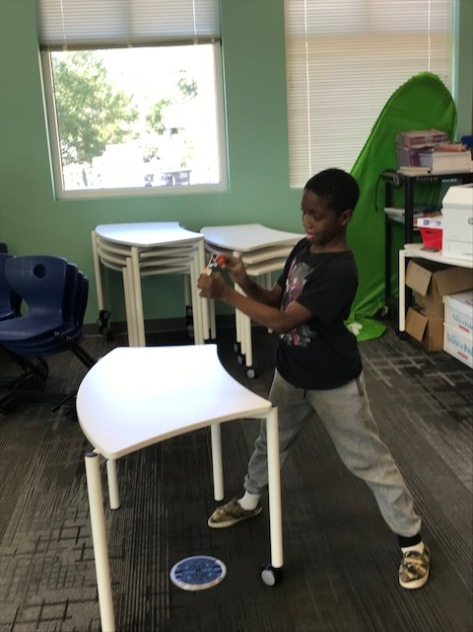















 During the actual Barrow Maker Fest, we created a schedule so that every student who made something had two 30-minute windows to showcase their work. There was also a schedule for classes to sign up and come to view the projects. The entire UGA class came as well so that they could view the final projects as well as help students at tables.
During the actual Barrow Maker Fest, we created a schedule so that every student who made something had two 30-minute windows to showcase their work. There was also a schedule for classes to sign up and come to view the projects. The entire UGA class came as well so that they could view the final projects as well as help students at tables.
















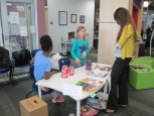














































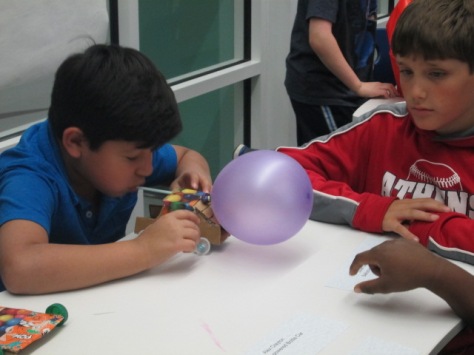


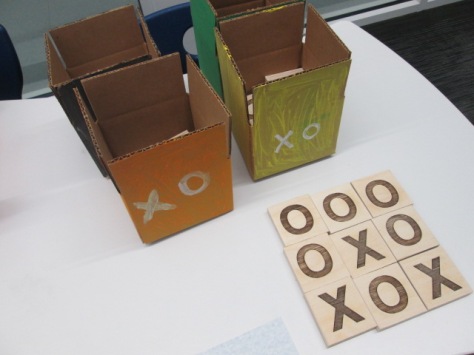

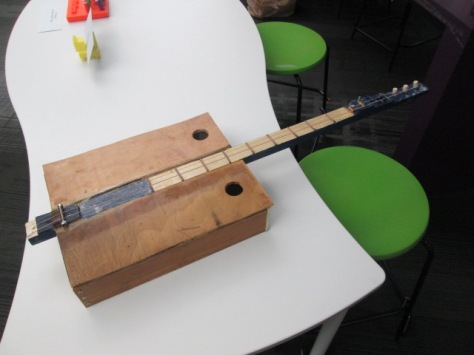
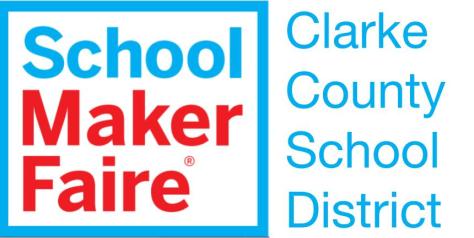

















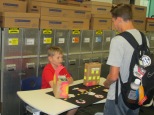







 Our 5th grade is currently studying the impact on American life that several famous inventors had. When I was brainstorming with Shelley Olin, 5th grade social studies teacher, we began to wonder about connections these standards had to makerspace. It started as an idea seed and grew into a set of experiences for all 5th graders to engage in.
Our 5th grade is currently studying the impact on American life that several famous inventors had. When I was brainstorming with Shelley Olin, 5th grade social studies teacher, we began to wonder about connections these standards had to makerspace. It started as an idea seed and grew into a set of experiences for all 5th graders to engage in.

























